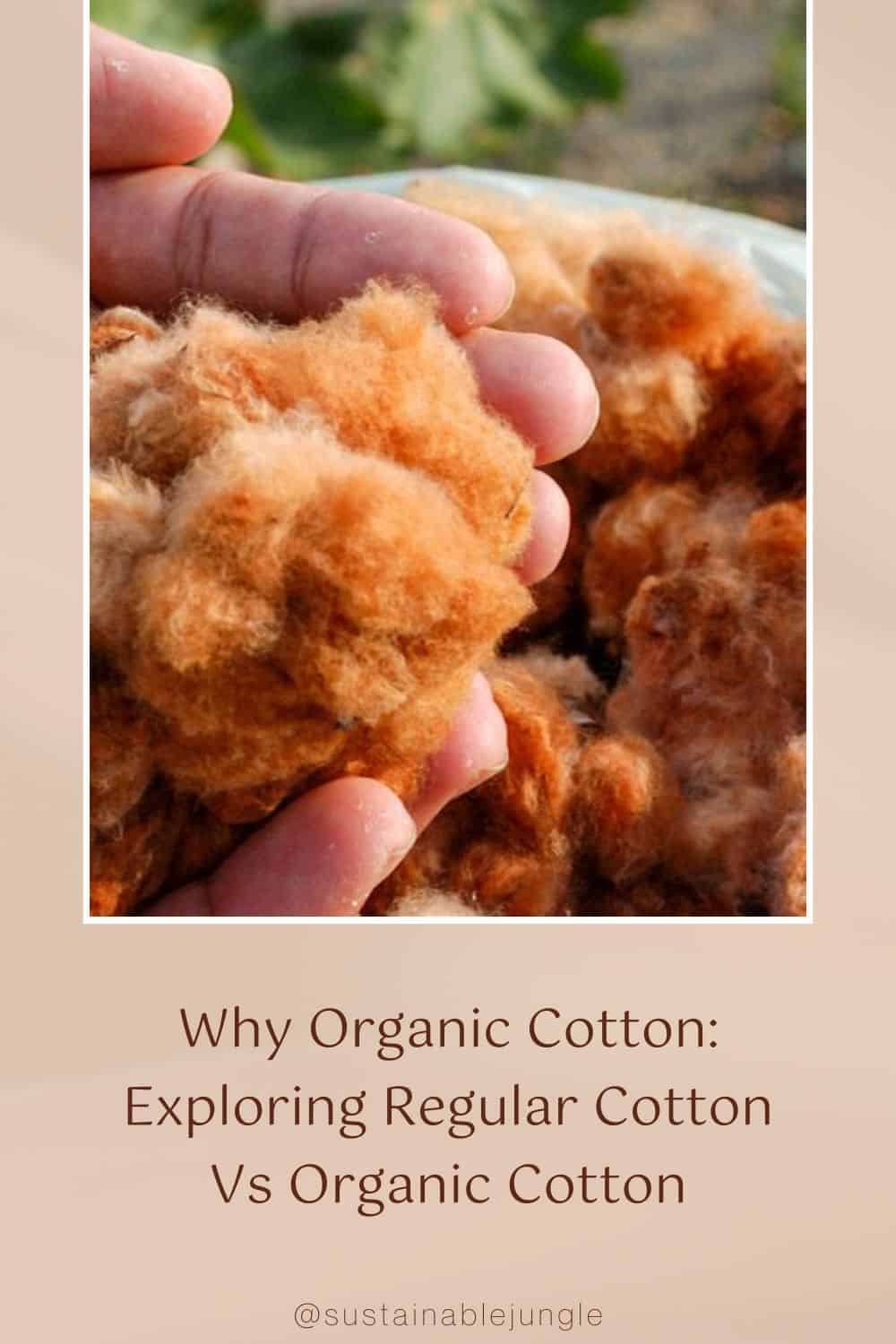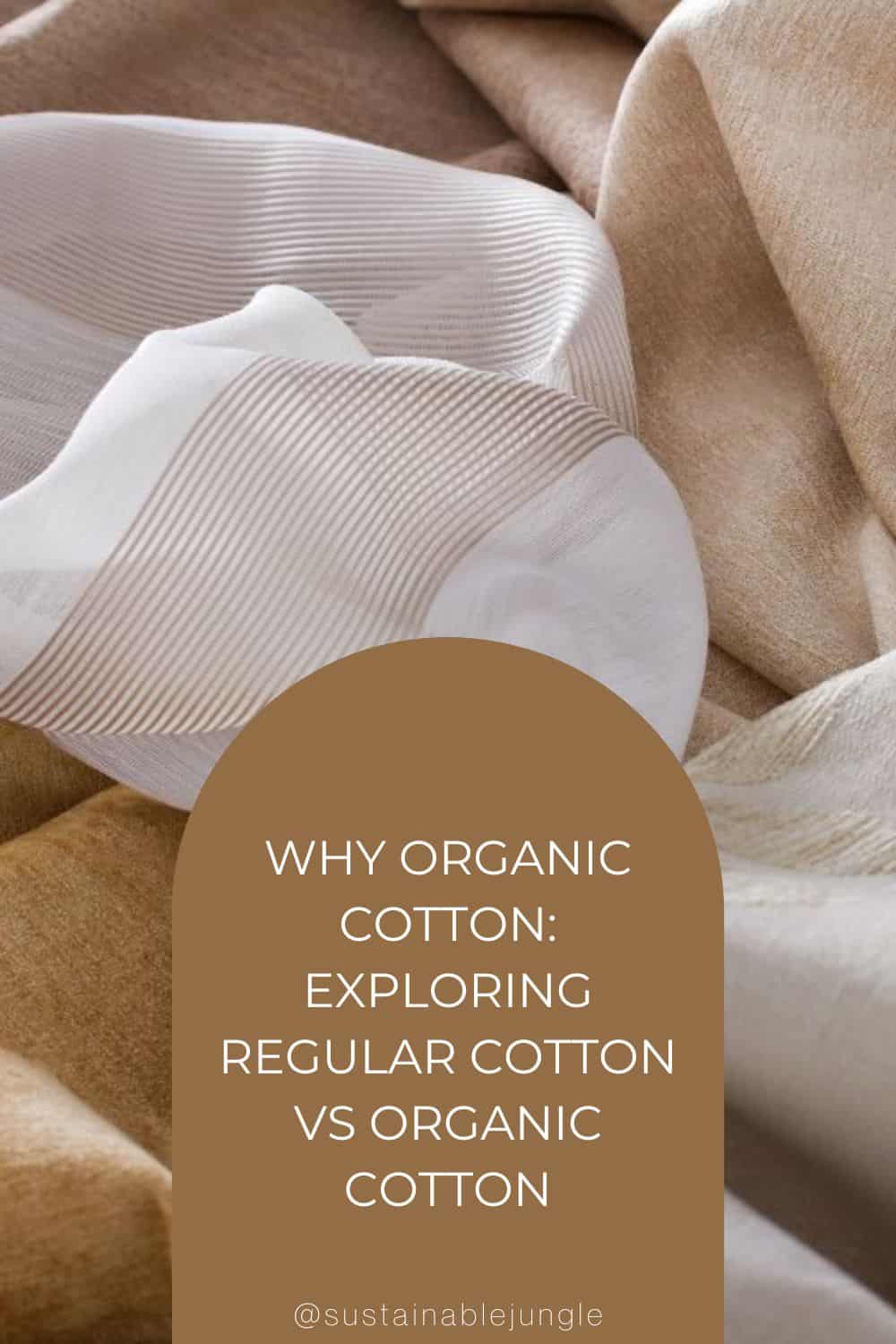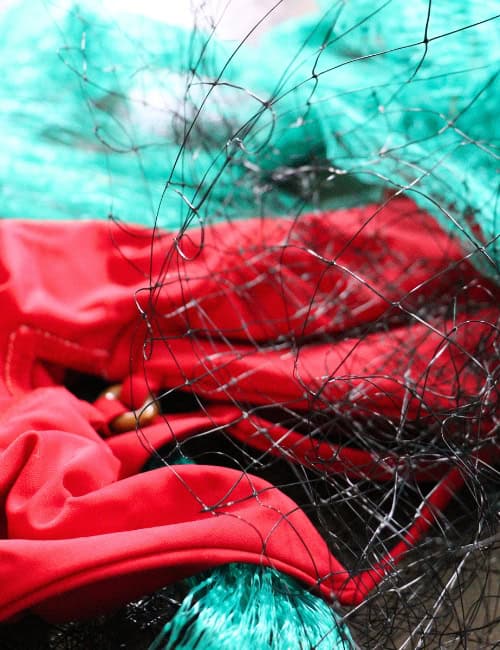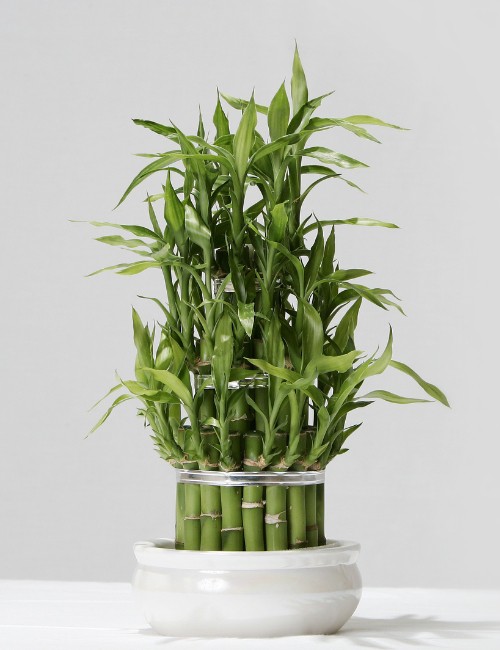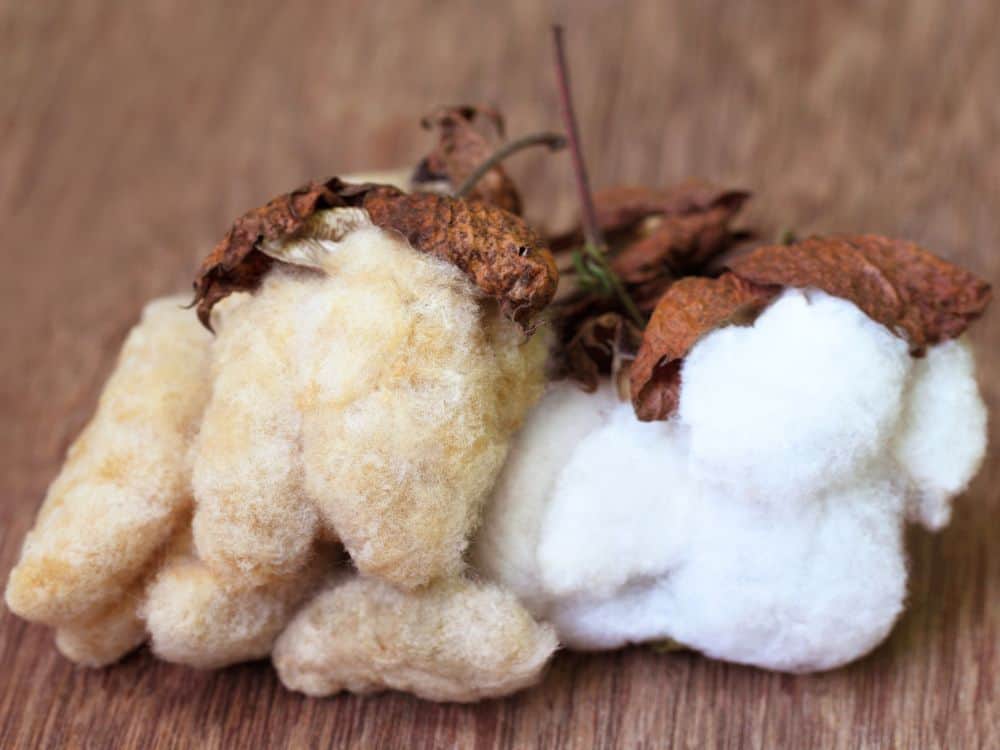
Why Organic Cotton: Exploring Regular Cotton Vs Organic Cotton
Between greenwashing, sci-fi-sounding materials, convoluted processes, and an array of acronyms, it can be hard to see the wood through the trees when it comes to sustainable fabrics.
Just as we did with ethical wool, fleece, vegan leather, and many others, we’re now going to (cotton) pick our way through perhaps the most famous fabric in sustainability circles: organic cotton.
We want to know why organic cotton is sustainable, whether it’s more sustainable than its conventional counterpart, and if so, by how much?
So, organic cotton vs cotton: what’s the difference?
Pull on your big girl (or boy) biodegradable cotton pants and join us on our foray into one of our favorite fabrics.
Together, we’ll winnow out the answer to why is organic cotton better than regular cotton?
The Full List For Organic Cotton Vs Regular Cotton
- What Is Organic Cotton?
- Organic Cotton Vs Conventional Cotton
- BCI Cotton Vs Organic Cotton
- Is Organic Cotton Better Than Other Textiles?
- How Sustainable Is Organic Cotton?
- Benefits Of Organic Cotton
- How To Look For Legitimate Organic Cotton Certifications
- Greenwashing In Organic Cotton
- Organic Cotton Clothing Brands
1. What Is Organic Cotton?
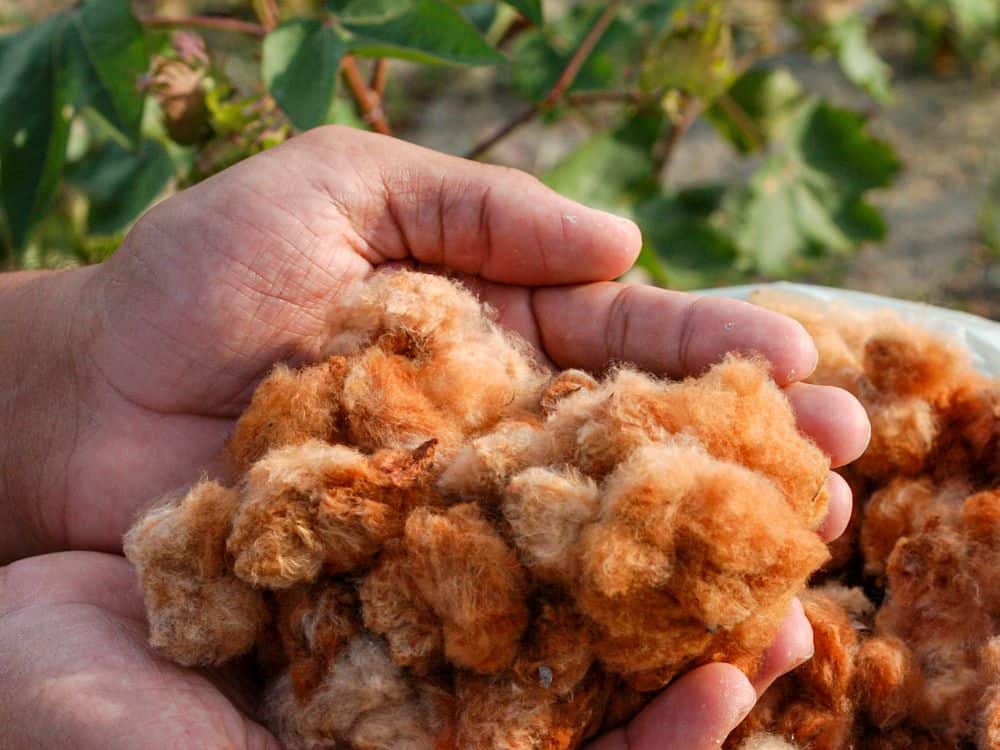
Organic cotton is simply cotton grown in a way that doesn’t require the use of pesticides or other harmful chemicals.
Something is considered organic when all inputs come from the earth, meaning no synthetic substances, no harsh chemicals and no genetic modification (GM).
So, is organic cotton better for the environment?
On this basis alone, it’s a resounding YES.
To replace harsh chemicals, organic cotton farming relies on growing cover crops, applying organic fertilizers and compost, using beneficial insects, incorporating crop rotation techniques, and opting for human labor for weed control.
Not only do these growing methods have a reduced impact on the environment, but many beings benefit from them.
Organic production systems produce crops that have zero persistent pesticide and fertilizer residues (better for us and the planet) and are known to help support soil fertility and increase biodiversity.
Unlike regular cotton fabric, the organic version is also processed sans toxic chemicals, using natural or biological methods and substances (including azo-free sustainable dyes and chlorine-free bleaching).
2. Organic Cotton Vs Regular Cotton
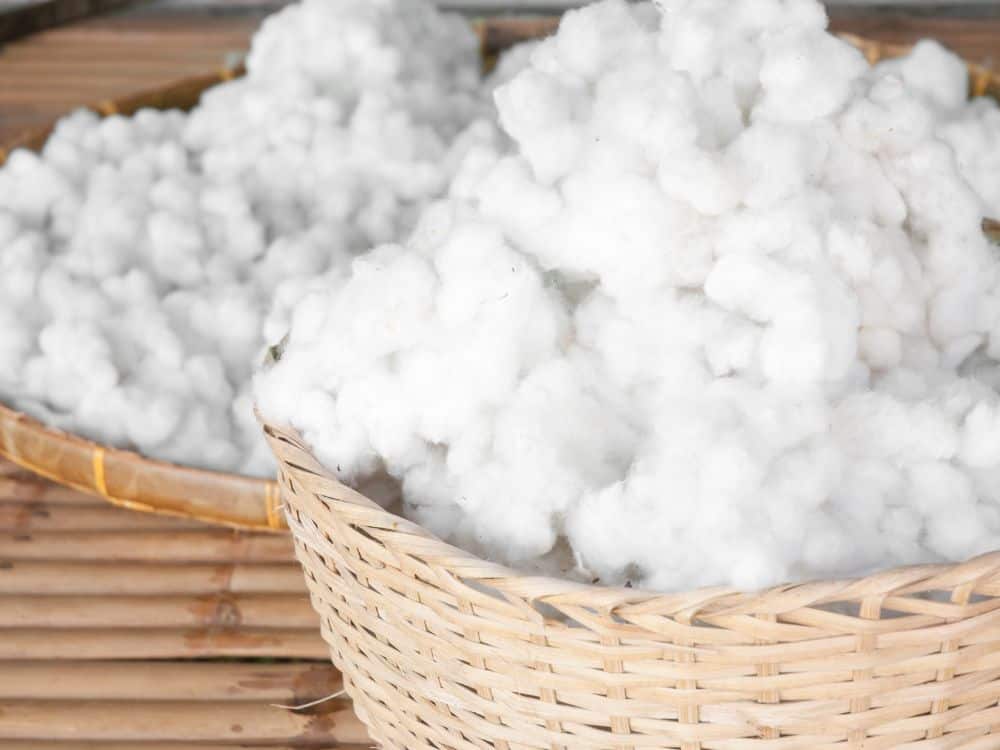
One of the best ways to understand what organic cotton is, is to look at what it is not. So let’s start by taking a closer look at “normal cotton.”
If you’ve been saying “OMG” about GMOs you may be surprised to find that one of the most popular genetically modified crops isn’t necessarily something that we put in our mouths… in fact, you might be wearing it right now.
Cotton is one of the top four genetically modified crops in the world.
Together, GMO cotton and conventionally grown cotton make up 95% of global cotton production, making their way into bedding, non-organic towels, clothing, and even processed foods.
So what’s the big deal? Cotton’s a natural material, right?
Well, regular cotton has earned a problematic nickname: the world’s “dirtiest crop.” It requires heavy amounts of toxic pesticides which poison thousands of cotton farmers and their families each year as well as pollute the environment.
Conventional cotton farming also uses some of the world’s most dangerous insecticides. Even though it only accounts for 2.5% of land in cultivation, it requires 24% of the insecticides sold worldwide.
It also takes one-third of a pound of synthetic fertilizers to grow enough conventional cotton to make one t-shirt.
Hence the rayon vs cotton debate questions whether this semi-synthetic might be better than conventional cotton in terms of environmental impact.
Chemicals in Regular Cotton
- Insecticides: bifenazate, imidacloprid, esfenvalerate, acetamiprid, abamectin, bifenthrin, thiamethoxam, propargite, buprofezin, thiamethoxam, fenpropathrin, novaluron, naled, dimethoate, diflubenzuron, fenpyroximate, pymetrozine, imidacloprid, methoxyfenozide, dicofol, pyriproxyfen, methomyl, chlorpyrifos, malathion, hexythiazox, flupyradifurone, aldicarb, phorate, dinotefuran, and the list goes on…
- Pesticides: fluometuron, pendimethalin, prometryn, aldicarb (super hazardous), acephate, phorate (super hazardous), cyfluthrin, glyphosate, MSMA, ethephon, endosulfan (super hazardous) tribufos, paraquat, and the list goes on…
- For scouring and washing: hydrogen peroxide, ethylenediamine tetra-acetate (EDTA), alkylphenol ethoxylate (APEO), chlorine
Tucking up in regular cotton bedding doesn’t sound so relaxing with these in mind, does it?
But is organic cotton better than regular cotton?
If you want to protect yourself, textile workers, and our environment from chemicals like these, yes.
With organically-produced cotton you can enjoy all of the positives of a sustainable dress or natural mattress protector, without being weighed down by the pollution and exploitation it’s associated with.
Why is Organic Cotton Better?
Still wondering why you should buy organic cotton?
Look no further than the heavily reduced list of “chemicals” used in the organic cotton production process:
- Insecticides: copper sulfate, insecticidal soap
- Pesticides: rotation crop practices (including wheat, alfalfa, and other food crops), natural predators, mixed cultivation, natural pesticides like neem spray, pyrethrum, and castor oil
- For scouring and washing: natural oils, potato starch
Essentially, organic cotton fibers are grown with the help of organic-approved pesticides, fertilizers, and herbicides—which are significantly better from a health and environmental perspective.
This means it also supports better and safer working conditions for cotton farmers and their families, the people most exposed to dangerous chemicals.
There is also a link between the economic factors involved GMO cotton cultivation and farmer suicides in India.
At the processing level, there are none of the toxic chemicals (think: formaldehyde, heavy metals, flame retardants, softeners, ammonia) commonly found in conventional cotton, making it better for anyone who doesn’t want to absorb trace amounts of chemicals with every wear.
3. BCI Cotton Vs Organic Cotton
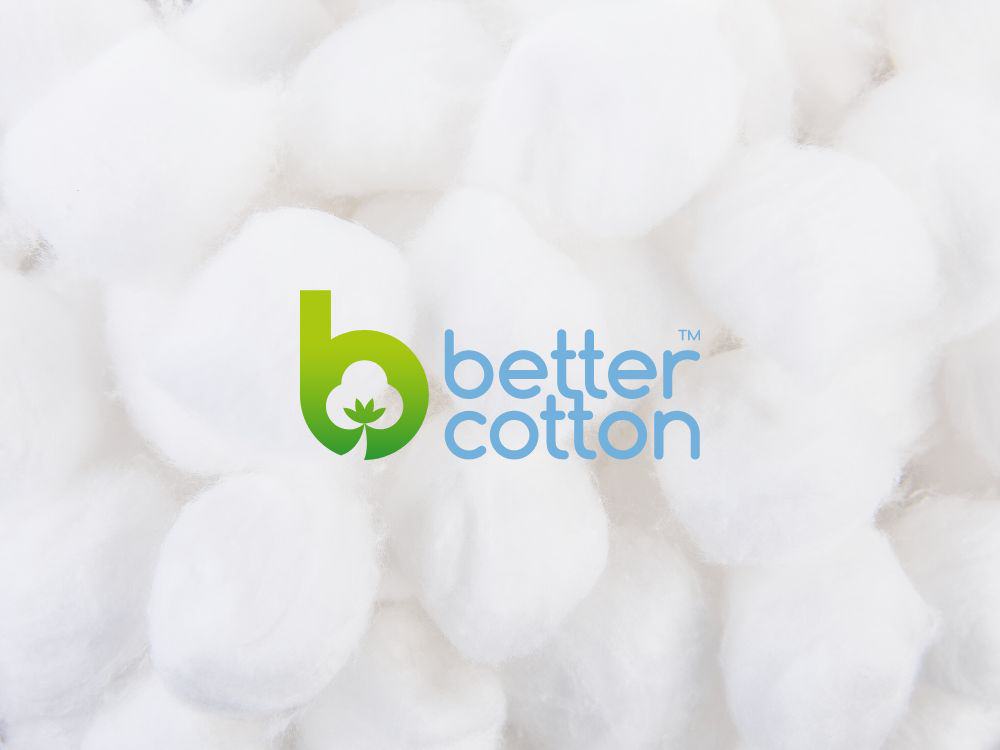
BCI cotton is intended to be “Better Cotton,” but it’s not organically grown. It can even be grown with genetically modified seeds.
While BCI membership now encompasses more than 2.2 million farmers across 24 countries, it’s unclear whether this is having an overwhelmingly positive impact on people and the planet.
BCI’s Principles & Criteria aren’t abiding standards. While it incorporates plans to reduce pesticide reliance, promote healthy soils, and encourage water stewardship, it doesn’t have a documented ability to conserve natural resources and avoid harmful environmental impacts, as organically-grown cotton does.
4. Is Organic Cotton Better Than Other Textiles?
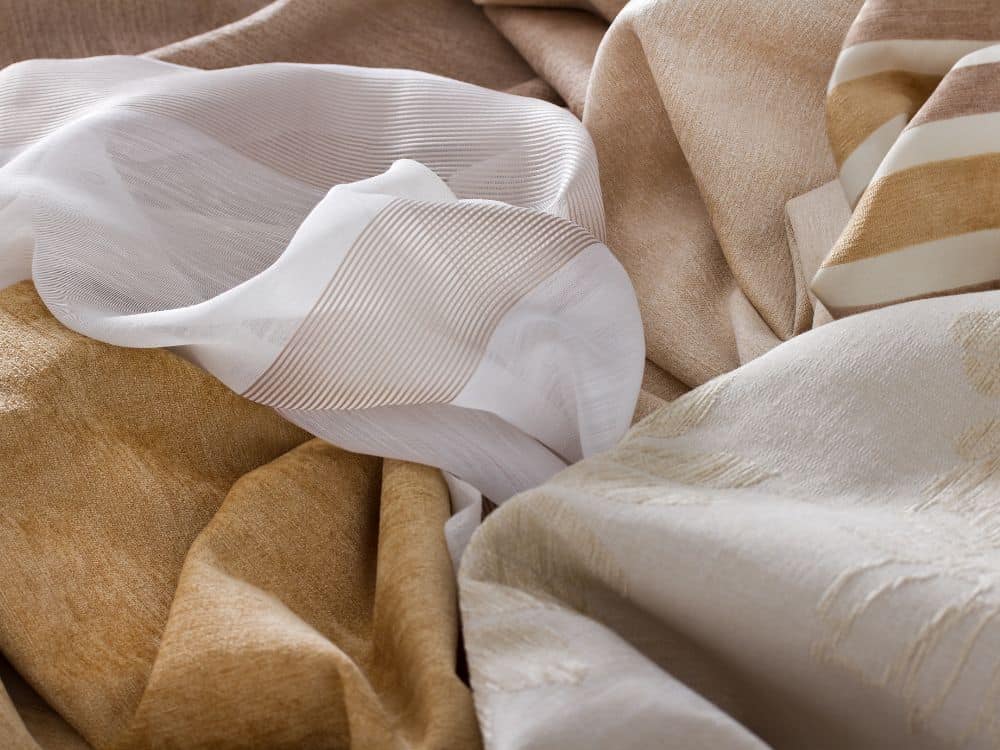
We’ve established that organic cotton is superior but is organic cotton more sustainable than other fabrics, too?
Organic Cotton vs. Hemp
Hemp fabric is highly regarded as one of the most sustainable. It’s similar to organic cotton in that it requires around 300 and 500 liters of water to grow 1 kg and it doesn’t require pesticides and fertilizers to grow well.
It’s also another summery, breathable fabric, though one that’s a little less soft than both organic and regular cotton. That’s okay, though, in turn, it’s faster drying and provides more UV protection.
Hemp also lasts much longer than cotton (20-30 years compared to just 10 years) and is more sustainable than organic cotton from a plant perspective. It grows faster, has an even smaller land-to-product-yield ratio, has a regenerative effect on soil quality, and is a carbon-negative raw material that absorbs more CO2 than forests.
For many years, the downside was its lack certification for organic hemp yet (leaving more room for greenwashing). Now, however, the USDA National Organic Program (NOP) has declared hemp can be officially organically certified—and agencies like MOSA are already on the job.
Organic Cotton vs. Linen
Linen is derived from the flax plant, and like hemp and organic cotton, it’s not water intensive and is grown without chemicals.
Linen fibers are shorter than both hemp and cotton fibers, making the fabric lighter and more breathable, but less durable.
It’s useful for a range of linen clothing, as well as organic linen curtains, and linen sheets but overall, organically-grown cotton will withstand everyday wear and tear better.
Organic Cotton vs. Pima Cotton
Which is better—organic cotton or Pima cotton?
The answer here isn’t as clear (crew) cut as the comparison with regular cotton.
While not organically grown, Pima cotton (like Egyptian cotton) is an extra-long staple cotton grown from the Gossypium barbadense plant. These longer individual cotton fibers make them a better quality (softer and silkier), and far more durable and resistant to wrinkles, fraying, and tearing than normal cotton.
In the US, Pima cotton accounts for 5% of cotton production.
Unfortunately, like with its “organically-grown” counterpart, there are far more claims of Pima cotton than there is actual cultivation of it (more on this later).
Organic Cotton vs. Semi-Synthetic Fibers
“Semi-synthetic” refers to cellulosic fibers or those made by dissolving plant cellulose and plasticizing it into a soft fabric. This includes vegan fabrics like bamboo, cupro, lyocell, and modal fabric.
Softer (in a silky way, as opposed to cotton’s plush tactile quality) and stretchier than cotton, these trending “green” fabrics certainly have their merit (if processed correctly), but organic cotton reins superior.
First, it requires minimal water to grow and process.
While requiring little water to grow is also true of bamboo and eucalyptus trees (which are used for lyocell), they require a certain amount of water to process.
Even the best semi-synthetics which are made using a closed-loop water recycling system still waste some water.
Second, these fabrics require chemicals to break down the plant pulp. While these can be eco-friendly solvents, organic cotton—which requires no solvents, is still the more sustainable option.
Organic Cotton vs. Polyester
Polyester is an attractive alternative—depending on how you look at it.
As far as the benefits of polyester v organic cotton go, durability stands at the forefront. Polyester can withstand a lot of wear and tear (like that ‘90s windbreaker you just got from the thrift store).
However, this durability is also an indication of how awful it is for the planet. Polyester is a synthetic fabric, meaning it’s made of petroleum, which (unless recycled) doesn’t break down in the soil.
Instead, it breaks into smaller pieces releasing dangerous microplastics into the environment—which it will also do each and every time it’s worn and washed.
Then there’s the cost to consider. Polyester is cheaper, but the costs are picked up by the planet and the people who are involved with the chemicals required to process the fabric.
Sure, it’s moisture-wicking and a better activewear alternative than cotton, but its embedded cost is very high for people and the planet.
The best bet for sustainable activewear is to look for mostly cotton activewear with a little bit of polyester (ideally recycled) to give it that stretchy, moisture-wicking quality necessary for workout clothing.
5. How Sustainable Is Organic Cotton?
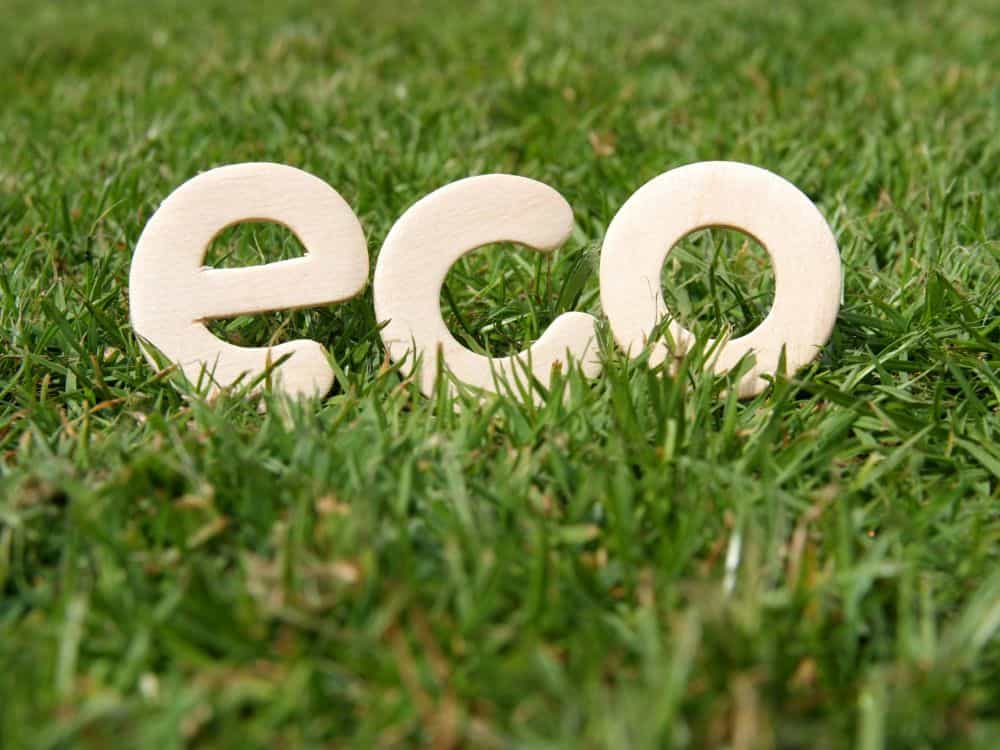
Environmental Benefits of Organic Cotton
Is organic cotton eco-friendly?
By examining organic cotton vs regular cotton at the farm level, we can understand why organically-grown cotton is better than its normal cotton counterpart.
When you picture fields of the so-called “white gold,” you may be quick to think of them as inherently good for growers and the planet. But consider that the world produces around 25 million tons of cotton each year.
Suddenly all the following negative inputs start to add up.
Cotton is a Thirsty Crop:
Non-organic cotton may be a cooling fabric, but it takes 2,500 liters of water to produce a t-shirt, making it one of the world’s thirstiest crops.
This insane amount of water isn’t just from irrigation—it’s also from pesticides and inefficient water usage.
Fortunately, organically-cultivated cotton takes a smaller sip, requiring 91% less water than its conventional counterpart (and it’s responsible for much less water pollution, too).
Organic Cotton Plays a Role in Regenerative Agriculture:
Regular cotton yields a lot of earth-damaging chemical runoff. All those toxic pesticides and fertilizers are contributing to global biodiversity loss, which is one of the most concerning planetary boundaries we just can’t afford to cross.
Insects are seeing the brunt of this, like butterflies’ and moths’ 58% decade-long decline in areas of mass agriculture.
Going beyond do-no-harm, organic farming has a place in the growing field of regenerative agriculture because of its potential to sequester carbon from the atmosphere and actually improve biodiversity.
Regenerative agriculture can be used in agricultural systems that increase the amount of organic matter found in soil and create resilient ecosystems and farming communities.
Organic Production Uses Less Energy and Produces Fewer Emissions:
The energy demands of organic cotton farming are also much lower (remember, fertilizers come from fossil fuels). A life cycle analysis (LCA) by Textile Exchange found that the energy demand of organic cotton was 62% lower than conventional cotton.
Organically-farmed cotton is also associated with less greenhouse gas emissions.
Compared with regular cotton, the organic version is responsible for 46% fewer carbon emissions, simply by using alternatives to nitrous dioxide-releasing pesticides and fertilizers.
Using less mechanized farming practices and retaining healthier soils (aka “carbon sinks”) helps, too.
Is Organic Cotton Sustainable?
Just how eco-friendly is organic cotton?
Despite everything we’ve looked at so far, the question of how environmentally friendly is organic cotton? doesn’t always come with an answer of organic cotton = good.
In some cases, it gets a little hard to separate the bolls from the stems.
Some argue that compared with regular cotton, the organic version is less efficient per hectare. Largely due to biotechnology, conventional cotton’s yields have grown 42% in the past few decades.
On two comparably-sized fields, the one with conventionally planted cotton will produce more. While organic farming will use less water and require no pesticides or fertilizers, it will take more land to produce a similar yield, therefore meaning a greater impact on the environment.
Therein lies the debate that’s commonly used with organic food, particularly coming from those in favor of conventional agriculture.
It may come as no surprise that those who critique the merits of organic cotton include Cotton Incorporated, the research and marketing company representing US cotton growers and importers.
It’s no wonder they would want to cast a negative light on the rapidly growing organic cotton industry—even when all other evidence points the environmental blame in the opposite direction.
6. Benefits Of Organic Cotton
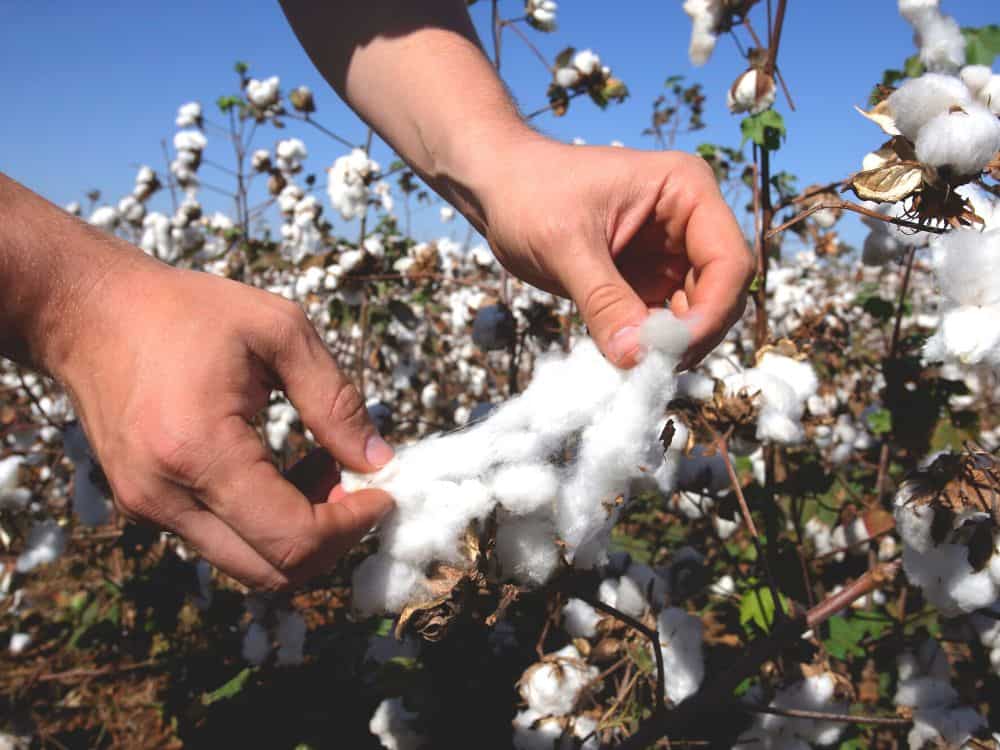
Social Benefits of Organic Cotton
We mentioned the association between GMO cotton and farmer suicides earlier, but here’s another shocking fact: when farmers do commit suicide, they commonly do so via pesticide poisoning, using the very pesticides they’re unable to pay off.
There’s a lot to unpack here. It’s both devastating and telling that the tool that supposedly supports these farmers’ livelihoods is in fact what ends their lives.
Not to mention concerns about all of the farmers and their families who are exposed to these life-ending pesticides on a daily basis simply by carrying out their work.
Organic Cotton is Farmer Friendly:
In addition to endangering flora and fauna, the pesticides and herbicides used in non-organic cotton farming pose a risk to human health.
Some of these pesticides have been associated with health conditions like chronic coughing, skin allergies, nausea, vomiting and diarrhea, loss of consciousness, and seizures. Long-term exposure can cause depression and anxiety and has been associated with birth defects and several cancers.
Not only do agrochemicals compromise a farmer’s physical health, but their mental health suffers when they see the damage these chemicals have on soil (making for unhealthy crops in the future) and ecosystems as a whole.
Fortunately, organic cotton farming supports safer working conditions by keeping GMOs, pesticides, and chemicals off of more than 350,033 hectares of land.
Many Farmers Receive Support for Organic Cotton:
It comes down to not just a farmer’s health, but their livelihoods, too.
Sustainable agriculture has been associated with ethical lending and microfinance opportunities that allow organic farmers to escape the debt cycle brought on by needing to buy new seeds and chemicals every year.
Additionally, traditional techniques are more likely to be supported with organic cotton, as are locally-sourced biological inputs and natural seeds. This keeps the skills and knowledge transfer local, allowing farming families to pass down indigenous knowledge that is essential for resilience against climate change.
Why Organic Cotton is More Expensive
As with most things of higher quality and ethical merit, you’ll likely see a higher price tag when comparing things like organic undies with those made with regular cotton (or a polyester-cotton blend).
Organically-grown cotton is more expensive because it takes more time and more hands-on labor. Instead of spraying chemicals x, y, and z over everything (including waterways, neighboring property, etc.), organic farming techniques require careful planning (and perhaps manual weeding).
It’s also worth it for you since the benefits of wearing organic cotton are greater than those of conventional cotton. As a more durable fiber, your dollar lasts longer, too.
Benefits of Wearing Organic Cotton
Is organic cotton better for skin?
You betcha. It’s especially better for sensitive skin since there aren’t any toxins embedded in the fibers.
Non-organic clothing has been found to contain formaldehyde, which is responsible for allergic reactions. By avoiding toxic pesticides and harmful substances used during manufacturing, organically-grown cotton is a safer choice for sensitive skin and those prone to skin allergies.
Is organic cotton softer than regular cotton?
The organic version is the winner here, too.
Because they’re handpicked from longer fibers, the structural integrity of organically-cultivated cotton fibers is maintained. Since it’s less likely for each fiber to get broken, frayed, or weakened, it results in a softer, more durable fabric.
Put simply: it’s hard to beat that organic cotton feel.
But, before you shell out a premium price for must-have thermal ethical pajamas, organic baby blankets, or sustainable baby clothes, be sure it’s legitimately organic by looking for third-party certifications!
7. How To Look For Legitimate Organic Cotton Certifications
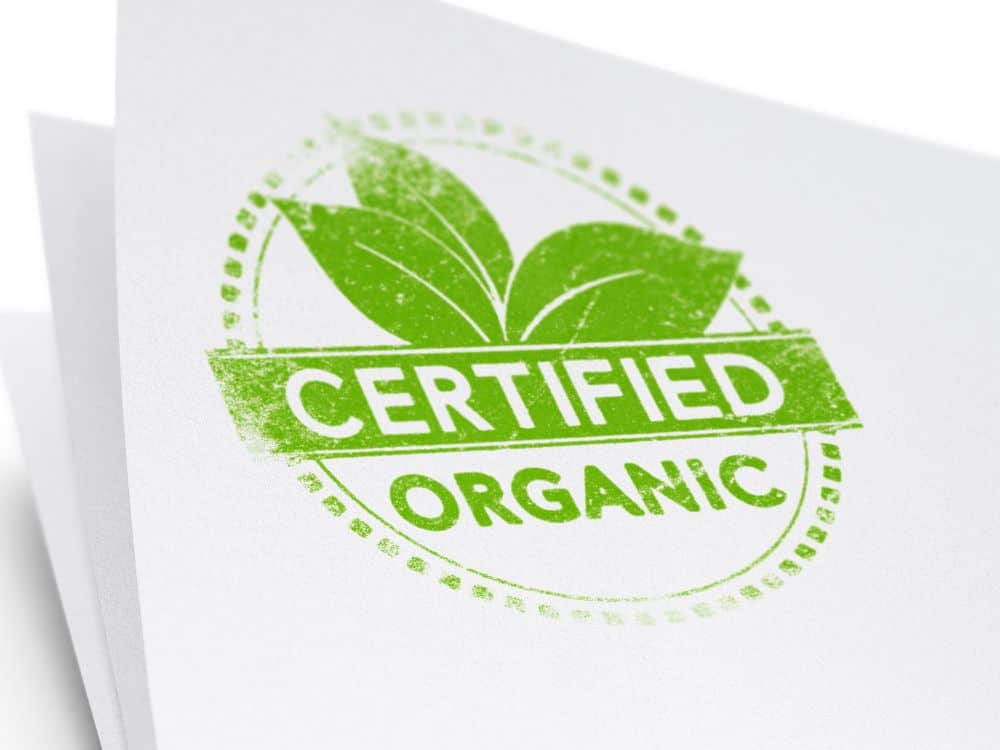
Why Choose GOTS Organic Cotton?
Yes, another acronym with Gs and Os. This one’s a good one though.
GOTS, or the Global Organic Textile Standard, is the “worldwide leading textile processing standard for organic fibers.”
While it doesn’t come without controversy (as with nearly everything in the textile industry), GOTS is recognized as the toughest third-party organic textile standard.
Why choose GOTS organic cotton?
Well, in addition to ensuring that the cotton (or other textiles) have been grown organically, it must also:
- Contain a minimum of 95% certified organic fibers
- Be processed without bleach, dye, formaldehyde, and other toxic chemical inputs
- Be produced in a mill that has strict environmental and social standards (i.e. one that minimizes waste, has full records of energy and water consumption, promotes freely chosen employment, prohibits child labor, assesses wages based on the living wage gap, and supports freedom of association and collective bargaining)
- Be free of azo and chemical dyes that release carcinogenic compounds
Other Sustainable Cotton Certifications
GOTS organic cotton is certainly the OG in the world of organic cotton, but there are some other manufacturing certifications to look for when shopping sustainably:
Organic Content Standard (OCS):
The Organic Content Standard is a third-party certification that can be applied to any non-food product that contains at least 95% organic material. Unlike GOTS, it doesn’t include any standards around social or environmental issues, but it is the next most stringent in terms of sustainable farming practices.
While not always organic, Fairtrade-certified cotton bans genetically modified cotton seeds and has practices in place to protect farmers’ health and safety, in addition to providing fair wages.
Regenerative Organic Certified (ROC):
This relatively new certification scheme is for products that meet some of the highest standards ever set for animal welfare, soil health, and farmworker fairness. Many of our favorite brands have been involved with the Regenerative Organic Alliance and the certification (including Dr. Bronner’s and Patagonia).
While they don’t certify the entire process (like GOTS), you may also see cotton that has been grown organically and is certified by organizations like the USDA National Organic Standard and the Organic Trade Association (OTA).
8. Greenwashing In Organic Cotton
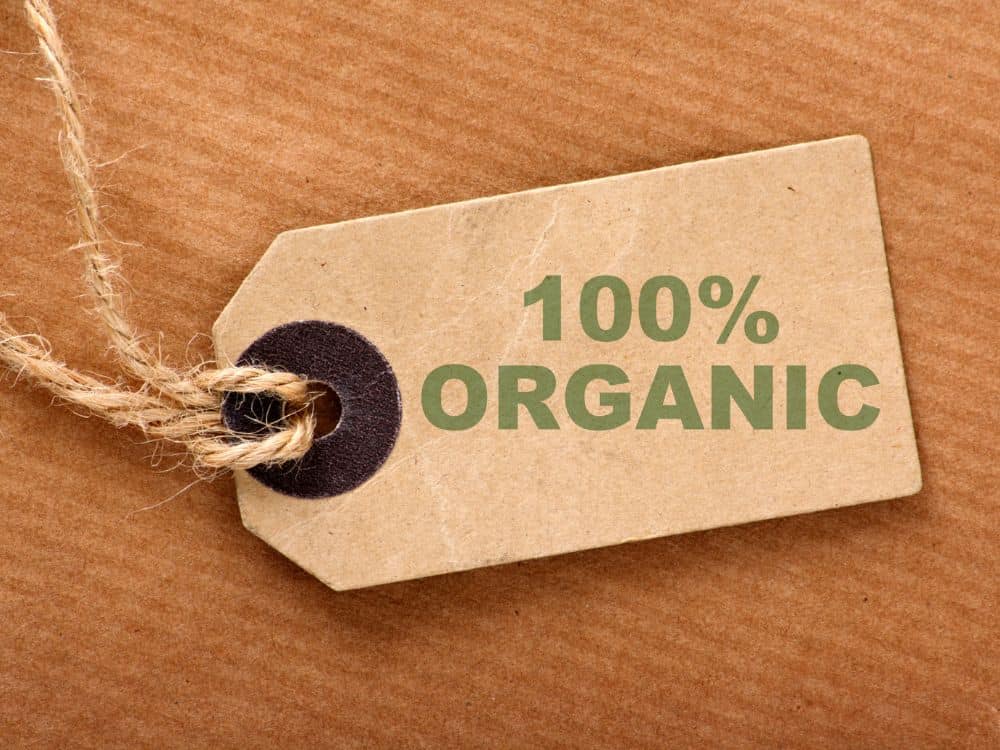
Truly organic cotton is all well and good. Unfortunately, a concerning question has been brought to light: how much “organic” is truly in “organic cotton”?
The industry has recently come under investigation for claims of fraudulence from first-hand sources, namely farmers in India who claim much of the cotton (as much as one-half to four-fifths) being sold as “organic” is not grown that way at all.
While Textile Exchange claims organic cotton production doubled between 2016 and 2019, industry insiders counter that there aren’t enough organic seeds in circulation for that to be possible.
Wait…don’t organic certifications prevent this?
While seeing “Certified Organic” on the label gives us a sense of comfort, it’s important to bear in mind that not all certifications are created (or rather upheld) equally.
Many organic cotton certification processes are filled with holes and corruption, as we found out when doing a deep dive into GOTS-certified cotton.
While some have the best of intentions, organizations like the Global Organic Textile Standard and Textile Exchange don’t personally perform the required auditing. Instead, they rely on middleman inspection agencies, who can be paid off to give the rubber stamp or “organic” seal.
Insiders call this system “trading paper,” because that’s the method used to pass these certifications on from farm to gin to mill until it eventually lands at the brand.
Recently, the credibility of some of these inspection agencies—Control Union, EcoCert, and OneCert—have tanked and the EU no longer accepts organic certifications from them.
However, this only applies to raw Indian cotton, not processed or manufactured exports, and since many organic cotton products undergo the manufacturing process in India, it provides a convenient loophole.
All in all, the lack of a digital tracking system (which the Indian government promised to implement in 2009) and the fact that so many parties stand to financially benefit from this fraud create a recipe for disaster.
Sustainability sells, which begs the question: who pockets all that extra money made by “organic” cotton?
The only thing certain is that it’s not the farmers. Even amidst market price spikes, truly organic cotton farmers are dwindling because they can no longer afford its higher operational cost.
While India has been the target of this scrutiny—producing half the world’s organic cotton supply—it’s worth noting China and Turkey are not immune.
Is there a way to fix this?
Again, a digital tracking system of all organic cotton produced would be a step in the right direction in ensuring that organic and regular cotton are actually produced in different ways (not just sold at higher premium prices).
Until then, major players in the organic game are stepping up to bat.
Like the EU, the USDA no longer accepts organic certification inspections from companies overseen by the Indian government, unless further accredited by the USDA’s NOP standards.
But closer to home, the USDA Organic’s reliability has also been questionable.
As consumers, the best answer appears to be to look for organic certifications backed by non-toxicity sustainability certifications (such as OEKO-TEX, SGS, and bluesign® Approved).
This means finished products are tested for harmful chemicals like pesticide residue that remains in the fiber from non-organic farming methods.
9. Organic Cotton Clothing Brands
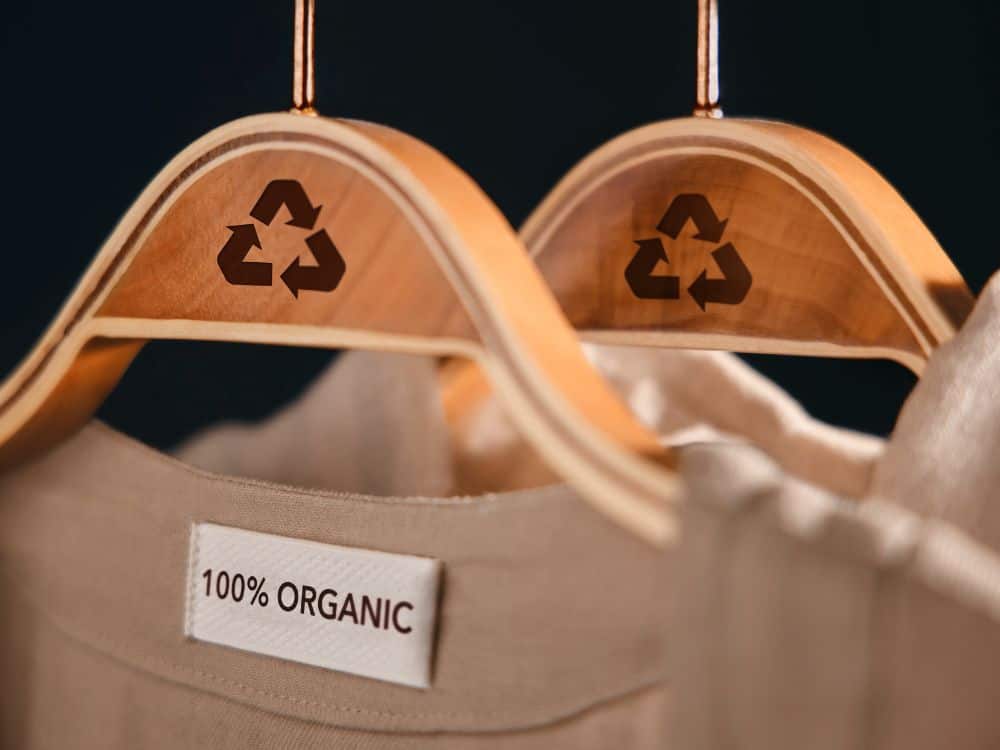
Are organic cotton clothes better?
Done right, organic cotton fibers can offer a (cot)ton of benefits for people and the planet. And we’re not the only ones who understand why organic cotton is important.
As a match made in sustainable fashion heaven, most of our favorite sustainable fashion brands are also going gaga over organic cotton—which is why they’re using it in organic cotton t-shirts, organic pajamas, activewear, organic underwear, and an abundance of other organic clothing.
- Patagonia: Patagonia’s been using organic cotton for two and half decades. 100% of their cotton is now organic. They’re even piloting a Regenerative Organic Certification which you can learn more about in their short documentary Dirt Cheap.
- Pact: Pact reduces its impact on our planet by using mostly GOTS-certified cotton which they call “Earth’s Favorite Fiber”. Theirs is manufactured in Fair Trade factories.
- Coyuchi: Coyuchi also uses mostly GOTS-certified cotton in their organic blankets to ethical pajamas.
- prAna: Another outdoor brand that makes sure all their cotton is organic, prAna is known for its super soft and durable cotton activewear.
- Threads 4 Thought: In addition to other sustainable fabrics, T4T proudly uses GOTS-certified cotton.
That’s only a tiny thread in the tapestry of all the brands using organically-grown cotton fibers.
Growing in popularity, organic cotton will hopefully eventually take the place of normal cotton so we’ll see thriving, biodiverse organic cotton fields in place of those that deplete soil, rely on chemical fertilizers, and put the health of all beings at risk.
Did you know we Have a Newsletter?
We cover the latest in sustainable living, fashion, zero waste, beauty, travel, finance and more…
Final Thoughts On Why Is Organic Cotton Better
So, is organic cotton better than conventional cotton?
Yes!
It’s like Mother Earth created one of the most sustainable fabrics for keeping us cool, dry, and happily wiggling our toes in comfy sustainable socks.
Because of how it contributes to healthier wearers, farmers, communities, ecosystems, and the planet as a whole, it’s easy to see why you should buy organic cotton.
Even with the potential greenwashing in the industry, organic cotton still matters. We just shouldn’t take a single certification as the be-all and end-all answer to sustainability, but rather as one component of what it means to be a more conscious consumer.
As always, the most sustainable clothes are the ones you’re wearing (or the ones you find at your local or online thrift store).
Let’s all help make the fashion industry a little cleaner by cutting out the world’s dirtiest crop. Share this article with fellow sustainable fashionistas and help spread the word about the clear winner in the regular and organic cotton matchup.
Pin these:
